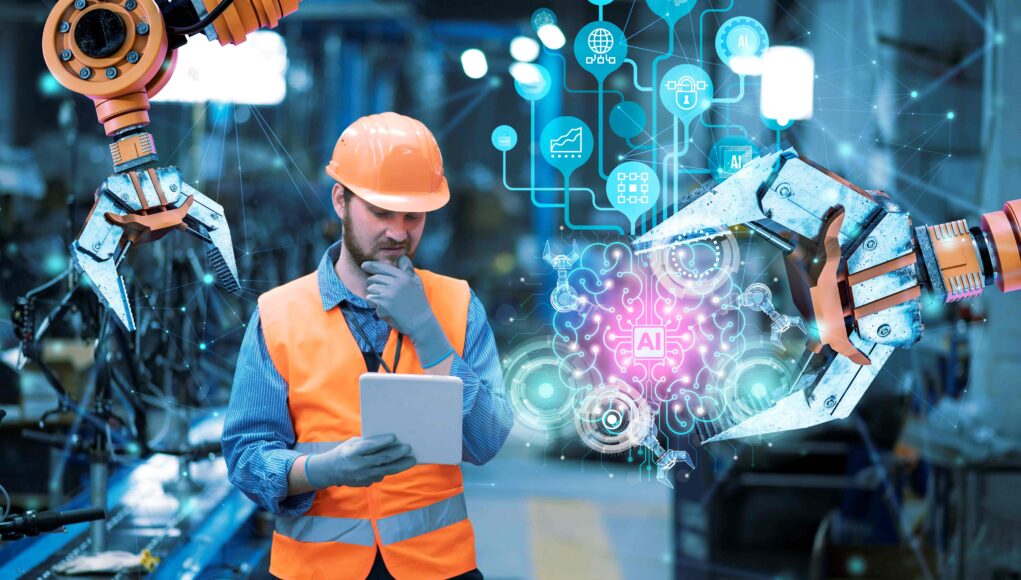|
Summary: Edge case detection enables manufacturing robots to manage distinctive situations such as misaligned elements, lighting changes, or unforeseen obstacles. Catching and understanding these seldom-occurring circumstances makes the system securer, more dependable, and efficient. Centaur.ai tells the robot about human annotation and gives it feedback from the entire world, making the robot adaptive, decreasing downtime, and building long-term confidence in automated operations. |
Introduction: Why Edge Cases Matter in Manufacturing Robotics
Most robotic systems in a manufacturing facility work best when the environment is predictable and mute. On the other hand, life is loaded with surprises: minute lighting changes, some unexpected extraneous objects in the workspace, slight variations in component shape, etc.
Edge-case detection in robotics and manufacturing is not just a technical towel drying rack, it is what differentiates a robot that performs reliably in the laboratory from one that can be trusted on a bustling factory floor.
What Exactly Are Edge Cases?
An edge case is any event that lies beyond the conditions a robot has been trained to expect. In practice, these include:
- Unexpected objects or obstructions: For instance, a worker’s hand moving through the field of vision could be a problem, as well as a stray bolt rolling across the floor or packaging material being left somewhere it is not supposed to be.
- Variations in part geometry: A part coming through slightly out of alignment, warped, or defective compared to an “ideal” version.
- Environmental changes: Shadows, glare, vibrations, dust, etc., interfere with sensors.
- Rare yet critical: The sudden break of a conveyor, an emergency stop from an operator, an order mix-up during operation.
Edge cases can cause hesitation, errors, or unsafe actions. If ignored, they reduce trust in automation and increase downtime. If properly detected and incorporated into training, they transform robots into systems that adapt with resilience.
Centaur.ai’s Role: A Human-Centred Solution
We bring something refreshingly down-to-earth to this problem: human judgment that catches what automated systems often miss.
Sensor Data Labeling
We support annotation across multimodal sensor data, from LiDAR and depth cameras to regular video feeds. By letting experienced humans label object boundaries, movement paths, and other features, the platform teaches AI systems to make sense of complex data streams and interpret real-world environments more accurately.
Capturing Edge Cases in Task Outcomes
Rather than merely noting whether a robot completed a task, annotators mark the edge cases, like a slightly off grasp, or timing that feels just wrong. This helps teams understand where things go off the rails so they can fine-tune AI behavior.
Human–Robot Interaction (HRI) Feedback
When robots and humans share the same space, how they interact matters. We invite people to evaluate scenarios like handoff timing, social distance, and intent alignment, elements that cameras or code alone would miss. That feedback rooted in human perspective boosts safety and smooth interaction.
Simulation vs. Real-World Alignment
Robots often behave differently in simulation than they do in real life. We offer sim-to-real quality checks, where annotators flag inconsistencies between simulated behavior and actual execution. Discrepancies in vision or movement get marked, giving teams actionable leads for retraining.
Why This Approach Works
Humans See What Code Misses
Automated systems are great at patterns, but edge cases often hide in the gaps. Human eyes detect subtle oddities: a paint splatter, an awkward posture, an odd reflection. Labeling those rare moments delivers richer, more robust training.
Experience Builds Context
Annotators aren’t just clicking boxes, they’re observing intent. Was the robot too slow to hand over a tool? Did the interaction feel hesitant? That depth of evaluation helps shape smarter, safer robots.
Human-Rated Data Reduces Risk
By labeling edge cases, teams can retrain AI models before deployment. Early identification reduces costly recalls or accidents. It’s not about catching every rare event, it’s about learning from them.
Broader Trends: Edge Case Detection in Manufacturing
It helps to zoom out. What’s the wider landscape telling us?
Real-Time Defect and Anomaly Detection at the Edge
Edge AI enables robots to make split-second decisions by analyzing data locally, without cloud delays. That’s critical for spotting defects or anomalies right when they appear. Whether it’s a misaligned screw or a fluid leak, catching it in real time minimizes downtime and damage.
AI-Driven Predictive and Prescriptive Maintenance
Edge-powered AI doesn’t just react, it anticipates. By analyzing sensor feedback and historical patterns, systems predict equipment failures before they happen. That lets manufacturers plan maintenance ahead of time, reducing unplanned stops and saving millions.
Mission Control: Detecting Edge Cases Intuitively
Platforms scan frame-by-frame, detect anomalies, and offer real-time insights, even when environments are complex. A glance tells teams what’s safe, correct, or slipping out of bounds.
Edge-Case Detection in Action: Realistic Scenarios
- Robotic pick-and-place task: A machine grabs a part but misaligns it by millimeters. Human annotators catch the slip during testing, helping the model adjust gripper alignment accordingly.
- Collaborative assembly: The timing slightly lags while handing objects back and forth. Evaluators mark this hesitation, and the model learns to sync pace more naturally.
- Navigation in changing lighting: Shadows or glare confuse the robot’s camera. Annotators flag frames where perception falters, prompting retraining with diverse lighting conditions.
- Unexpected items in view: A stray tool or operator’s hand drifts into scope. Humans tag these frames as anomalous, preventing unsafe actions in future runs.
Long-Term Benefits for Manufacturers
- Increased Trust: Workers gain confidence to collaborate with robots that respond in an expected way to unplanned incidents.
- Reduced Waste: Early detection of faint anomalies prevents massive batches of defective products.
- Scalable-Centric Improvement: Each new edge case detected and labeled is fed into the collective knowledge of the system, making the succeeding generation more robust.
- Fast Innovation: Bridging the gaps between simulation, testing, and deployment will fast-forward companies to market robotic solutions faster.
Putting It All Together
Edge-case detection is about bridging two worlds:
- Automated intelligence, powered by data and algorithms.
- Human nuance, built on experience and instinct.
Centaur.ai provides a framework where the human voice isn’t lost but central. Each annotated edge case becomes a teaching moment, a prompt that tells the AI model, “Watch for this nuance.”
That layered understanding transforms robots into tools that follow instructions and partners that adapt, understand, and navigate real-world messiness.
Final Thought
Building smarter, safer robots isn’t about eliminating edge cases but embracing them. When we label, learn from, and design systems around these outliers, we shape machines that thrive in the unpredictable spaces where innovation truly happens.
Let Centuar.ai know if you’d like to explore a real example, like a case study or performance metrics, or dig into how multi-sensor data boosts reliability in edge-case detection.
FAQs
- What are edge cases in robotics and manufacturing?
Edge cases are unusual or unexpected conditions, such as a defective part, glare that impairs a sensor, or an obstacle on the assembly line.
- Why is edge-case detection interesting?
Because those errors could be costly or create safety hazards, early identification will help retrain the system, stopping downtime and keeping operations smooth.
- How does Centaur.ai help in detecting edge cases?
This software platform allows human annotators to mark data from sensors, video, and real-world interactions, ensuring that those subtle faults or anomalies are considered in robot decision-making.
- What benefits do manufacturers get from edge-case detection?
They get stronger robots, better human and robot collaboration, less wastage on defective production, and faster adaptation in case of process or environmental changes.
- Does edge-case detection slow down production?
It does not. On the contrary, it accelerates the entire testing-to-deployment cycle. Locating problems early means manufacturers eliminate interruptions later, thus increasing overall efficiency.








